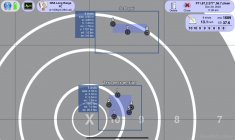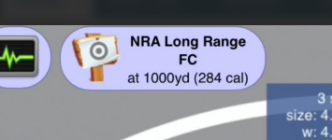Tod Hendricks
Gold $$ Contributor
While testing light or less neck tension I had 5 cases that ended up with no tension or grip on the bullets. So light if I turned them upside down the bullet and powder would fall out. I kept those 5 separated for foulers.
When I loaded them in the gun I eyeballed the OAL so it was close to the length of the rest of the box, but they varied widely. I also closed the bolt very slow.
Ive never done a controlled test with zero neck tension, so I was a bit surprised how they grouped, so much so I decided to shoot a few more into the group with the test rounds with 5-10 psi seating pressure. The difference on target velocity and elevation is very significant, way more than I would have ever expected.
The loads are identical other than neck tension and OAL, they were all jumped over .020”, the no tension loads were probably .020” to .050” jump. I’m visualizing the light tension bullets moved to a touch/jam point very rapidly in the firing sequence. Aim point is the same on all shots.
Anyways it produced a very interesting target to ponder.
When I loaded them in the gun I eyeballed the OAL so it was close to the length of the rest of the box, but they varied widely. I also closed the bolt very slow.
Ive never done a controlled test with zero neck tension, so I was a bit surprised how they grouped, so much so I decided to shoot a few more into the group with the test rounds with 5-10 psi seating pressure. The difference on target velocity and elevation is very significant, way more than I would have ever expected.
The loads are identical other than neck tension and OAL, they were all jumped over .020”, the no tension loads were probably .020” to .050” jump. I’m visualizing the light tension bullets moved to a touch/jam point very rapidly in the firing sequence. Aim point is the same on all shots.
Anyways it produced a very interesting target to ponder.












